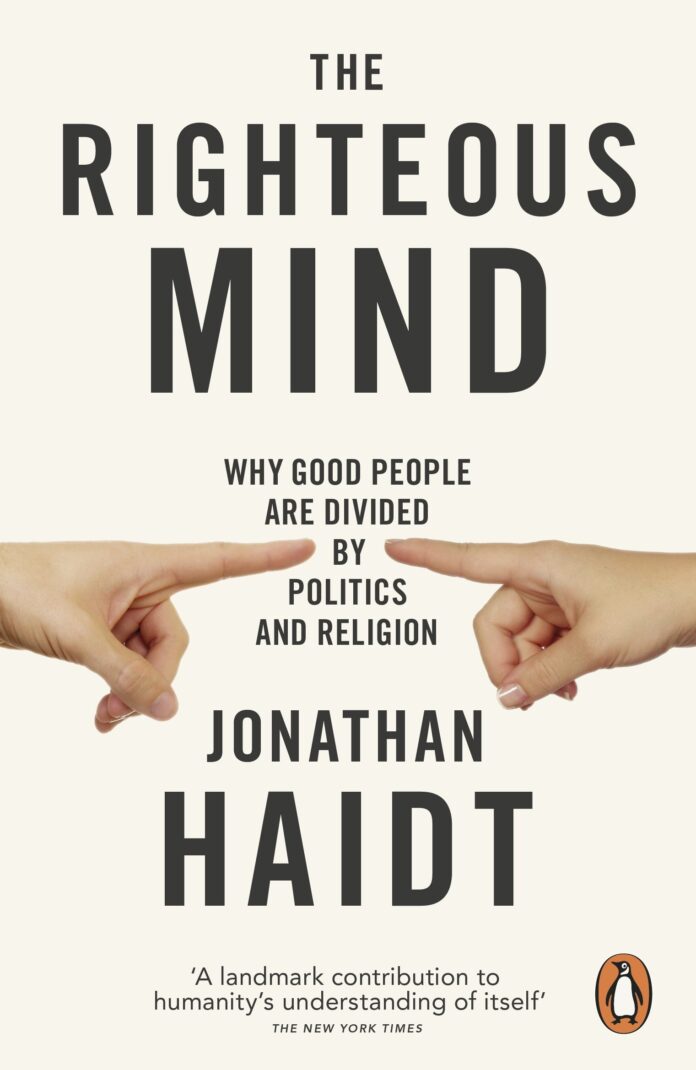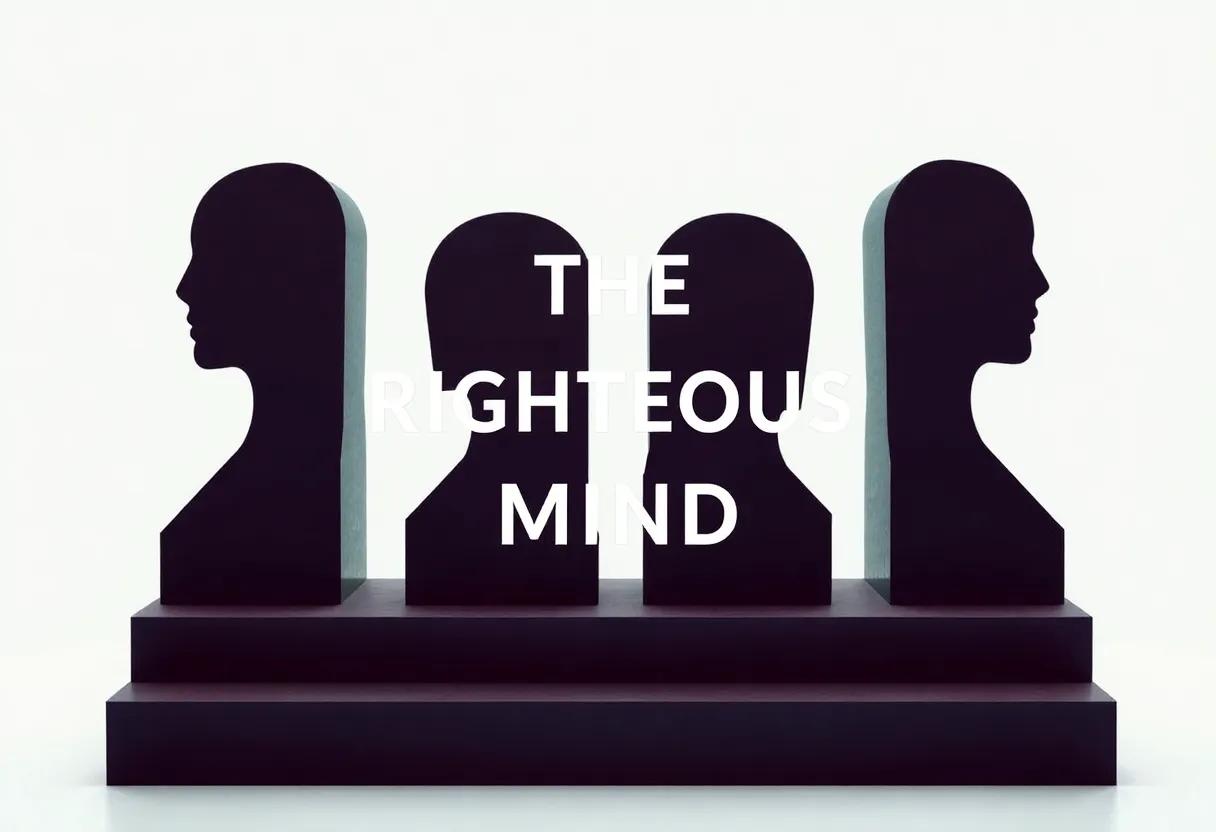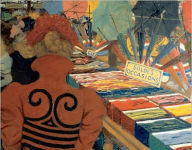In a world increasingly fragmented by ideological chasms and fractured conversations, understanding the roots of our moral judgments has never felt more urgent. Jonathan Haidt’s The Righteous Mind ventures boldly into this terrain, dissecting the mental frameworks that shape how we perceive right and wrong. Bridging divides: Exploring “the Righteous Mind” delves into Haidt’s provocative insights with a careful, measured eye-unpacking the complexities of human morality without casting judgment, inviting readers to reconsider not only the beliefs of others but the foundations of their own convictions.This review journeys through that exploration,weighing the strengths and limitations of Haidt’s ambitious attempt to illuminate the psychology behind our moral divides.
Understanding moral Foundations and How They Shape Our Divided World Through The Righteous Mind
Jonathan Haidt’s exploration of moral psychology reveals that our divisions often stem from fundamentally different moral foundations rather then simple disagreements. These foundations act as the lenses through which we interpret the world, categorizing values into intuitive pillars like Care/Harm, Fairness/Cheating, Loyalty/Betrayal, Authority/Subversion, and Sanctity/Degradation.Each individual and culture prioritizes these pillars differently, meaning what feels righteous to one can seem misguided or even threatening to another. The beauty of this framework lies in its ability to explain why political, religious, or social conflicts persist-because they are rooted more in emotional and intuitive responses than in rational debate alone.
Understanding these foundations empowers us to recognize the moral logic embedded in opposing viewpoints,which can foster empathy and bridge divides. Consider this simplified overview of how political affiliations often emphasize different foundations:
| Political Orientation | Primary Moral Foundations |
|---|---|
| Liberals | Care/Harm, Fairness/Cheating |
| Conservatives | All foundations (with emphasis on Loyalty, Authority, Sanctity) |
| Libertarians | fairness/cheating, Liberty/Oppression |
- Care/Harm: Focus on protecting others and reducing suffering.
- Fairness/Cheating: Concerned with justice and reciprocal altruism.
- Loyalty/Betrayal: Emphasis on group cohesion and allegiance.
- Authority/Subversion: Respect for tradition and hierarchy.
- sanctity/Degradation: Valuing purity and sacredness.
By realizing that our moral compasses are wired differently, we can shift from confrontation to conversation-paving the way for dialog that honors diverse moral priorities without demanding conformity. This nuanced moral map is crucial for anyone seeking to heal societal fractures and cultivate a more empathetic, connected world.
Exploring Jonathan Haidt’s Psychological Framework for Empathy and Political Dialogue
Central to Haidt’s approach is the identification of several core moral foundations that shape our political identities:
- Care/Harm: Sensitivity to suffering and the desire to protect others.
- Fairness/Cheating: Concerns about justice, rights, and equality.
- Loyalty/Betrayal: Valuing allegiance to one’s group or nation.
- Authority/Subversion: Respect for tradition and legitimate hierarchy.
- Sanctity/Degradation: The feeling of purity and disgust with moral contamination.
| Moral Foundation | Liberals | Conservatives |
|---|---|---|
| Care/harm | High emphasis | Moderate emphasis |
| Fairness/Cheating | High emphasis | Moderate emphasis |
| Loyalty/Betrayal | Low emphasis | High emphasis |
| authority/Subversion | Low emphasis | High emphasis |
| Sanctity/Degradation | Low emphasis | High emphasis |
Recognizing these differing moral priorities enables us to approach political dialogue with a toolkit grounded in empathy – appreciating why others hold their beliefs with conviction rather of dismissing them outright. It transforms conversation into an opportunity to connect moral values rather than intensify division, opening doors toward more respectful and productive exchanges.
The Role of Intuition Versus Reason in Moral Judgment Explained in Depth
At the heart of Jonathan Haidt’s exploration lies a profound distinction between two powerful forces guiding our moral decisions: intuition and reason. Intuition acts as the immediate,emotional compass,swiftly signaling what feels right or wrong without conscious deliberation. It’s an automatic response, often shaped by deeply ingrained cultural values and social conditioning.Reason, by contrast, functions as the rational architect, constructing justifications and arguments post-hoc to explain these intuitive judgments. Rather than leading moral insight, reason frequently enough serves as a defense mechanism, validating instincts that originated on a subconscious level. This dynamic reveals why people so passionately defend their moral beliefs – they are first felt deeply, then intellectually solidified.
Understanding this interplay can illuminate why moral debates frequently become stalemates; when intuition and reason don’t align,attempts to persuade others through logic alone can fall flat.haidt revisits a classic metaphor: the mind is like a rider (reason) on an elephant (intuition). The rider may think it’s in control, but it is the elephant’s raw power and direction that primarily drive the journey. Consider the table below, which contrasts core features of intuition and reason in moral judgment:
| Aspect | Intuition | Reason |
|---|---|---|
| Speed | Instantaneous | Purposeful |
| Nature | Emotional, automatic | Reflective, analytical |
| Primary role | Generate moral judgments | Justify moral judgments |
| Conscious awareness | Frequently enough subconscious | Explicit consciousness |
| Susceptibility | Cultural and evolutionary influences | Logical coherence and evidence |
how The Righteous Mind Illuminates the Roots of Political Polarization and Social Conflict
Jonathan Haidt’s groundbreaking work dives deep into the psychological underpinnings that fuel the seemingly unbridgeable gaps in political and social conversations today.At the heart of this exploration lies the concept that our moral judgments aren’t just rational decisions but are primarily driven by intuitive feelings. These intuitions form moral matrices that vary widely across cultures and political groups, resulting in a landscape where people often speak past each other rather than toward understanding. By framing morality as a complex web of emotions and social bonds, Haidt reveals why individuals on different sides of the spectrum perceive right and wrong in fundamentally contrasting ways.
To unpack this phenomenon further, haidt identifies key moral foundations that shape our worldviews. These foundations include:
- Care/Harm: Prioritizing compassion and protection from suffering.
- Fairness/Cheating: Emphasizing justice, rights, and equality.
- Loyalty/Betrayal: Valuing allegiance to one’s group or tribe.
- Authority/Subversion: Respect for tradition and societal order.
- Sanctity/Degradation: Cherishing purity and sacredness.
These foundations manifest differently along the political spectrum, creating distinct moral palettes that frequently enough dictate group loyalty and societal allegiances, inadvertently deepening political polarization. The tension arises not from ignorance but from fundamentally different moral priorities-each side convinced of the righteousness of its cause.
| Political Leaning | Dominant Moral Foundations |
|---|---|
| Left-Liberal | Care, Fairness |
| Conservative | All Five (Care, Fairness, Loyalty, Authority, Sanctity) |
Analyzing the Impact of Group Loyalty and Authority on Human Behavior and Decision-Making
Human behavior is deeply woven with the threads of group loyalty and respect for authority,often guiding choices in subtle yet powerful ways. Jonathan Haidt illustrates how our allegiance to close-knit communities not only fosters a sense of belonging but also acts as a filter through which we interpret events and make moral judgments. This instinct to protect and prioritize the group can drive cooperation yet concurrently sow division, as loyalty blinds individuals to opposing viewpoints. The tension between allegiance and autonomy surfaces in everyday decision-making, from voting patterns to workplace dynamics, reminding us that our social bonds shape not just who we trust but also what we believe to be right or wrong.
Authority, another pivotal factor, functions as a compass for behavior, signaling who to follow and which norms to uphold. Haidt reveals that respect for legitimate authority figures bolsters social order but can also perpetuate unquestioned traditions or biases when left unchecked. Understanding this dynamic is crucial, as it uncovers why appeals from trusted leaders often override purely rational arguments. Consider the following comparison of authority’s positive and negative impacts:
| Authority’s role | Positive Impact | Potential drawback |
|---|---|---|
| Social Cohesion | Maintains order and unity | Suppresses dissent |
| moral Guidance | Clarifies societal values | can reinforce prejudices |
| Decision Efficiency | Speeds group consensus | Limits critical thinking |
- Group loyalty encourages empathy within communities but may hinder cross-group understanding.
- Authority legitimizes norms yet risks dogmatism when authority is unchallenged.
- Balancing these forces is essential to fostering both unity and open-mindedness.
Practical Strategies from The Righteous Mind for Bridging Ideological Divides in Everyday Life
Jonathan Haidt offers several actionable insights that can transform our approach to conversations with those holding differing beliefs. At the core is the principle of empathy over debate. Instead of trying to “win” an argument, Haidt suggests genuinely understanding the emotional and moral foundations that shape someone’s worldview. By recognizing that morality is multi-dimensional and deeply personal, we can shift from confrontation to connection. Practically, this means asking open-ended questions, listening attentively, and appreciating the values that underpin others’ perspectives-even when they clash with our own.
Another powerful technique is cultivating what Haidt calls the “impartial spectator” mindset. This encourages stepping outside one’s immediate ideological frame to see the bigger picture, including the strengths and weaknesses of all sides. To help visualize this,consider the table below outlining common moral concerns from various ideological camps,highlighting areas of overlap that often go unnoticed:
| Ideological Lens | Primary Moral Focus | Shared Values with Opponents |
|---|---|---|
| Liberal | Care & Fairness | Justice,respect |
| Conservative | Loyalty & Authority | Security,Order |
| libertarian | Liberty & Autonomy | Personal Freedom |
Recognizing these shared values opens the door to collaborative dialogue and reduces polarization.By intentionally seeking common ground through this framework, everyday interactions become opportunities for building bridges rather than deepening divides.
The Influence of Moral Diversity on Democratic Societies and Cultural Cohesion
Jonathan Haidt’s exploration into the tapestry of moral psychology reveals how divergent ethical frameworks can both challenge and enrich democratic societies. When citizens bring varied moral intuitions to the table, it can seem like a source of friction, but it also fosters a dynamic environment where multiple values-such as liberty, fairness, loyalty, and sanctity-are constantly negotiated and redefined. This plurality acts as a catalyst for democratic dialogue, compelling communities to confront differing perspectives rather than retreat into echo chambers. However, without intentional bridges, such moral diversity may deepen partisan divides, making social cohesion more fragile.
The balancing act between celebrating diversity and maintaining unity requires conscious effort. Haidt’s work suggests that nurturing empathy through moral humility and understanding is key.Consider the following core dynamics that shape this interplay:
- Recognition: Acknowledging the validity of different moral foundations.
- Dialogue: Engaging openly across ethical divides to foster mutual respect.
- Integration: Creating shared goals that go beyond moral disagreements.
| Moral Foundation | Typical Democratic Challenge | Potential for Cohesion |
|---|---|---|
| Care/Harm | Disagreements over social welfare | Unified support for vulnerable groups |
| Authority/Respect | Varied trust in institutions | Shared civic rituals and laws |
| Fairness/Reciprocity | Economic inequality debates | Commitment to justice reforms |
Case Studies and Real-Life Examples that Bring Haidt’s Theories to Life
Another illuminating example comes from workplace dynamics, where teams composed of ideologically diverse members often experience tension but also opportunity. A company promoting open dialogue about differing values sees firsthand how Haidt’s insights foster empathy. Take the case of a tech startup where engineers and marketers disagree on product priorities, reflecting divergent moral emphases on Sanctity (preservation of quality standards) versus Fairness (user accessibility). By intentionally mapping these moral profiles, leaders encourage productive conversations focused on shared goals. Below is a simplified sketch of such moral priorities in the startup context:
| Team role | Dominant Moral Foundations | Resulting Priority |
|---|---|---|
| Engineers | Sanctity, Authority | Product reliability and adherence to standards |
| Marketers | Fairness, Care | User accessibility and inclusiveness |
| Leadership | Loyalty, Fairness | Team cohesion and equitable outcomes |
- Insight: Recognizing moral differences fosters respect rather than conflict.
- Practise: Encouraging reflection on underlying values reduces polarization.
- Outcome: Teams build bridges across divides, leveraging diversity as strength.
Critical Reflections on The Righteous Mind’s Approach to Ethics and Human Nature
Moreover, the broad categorization of moral foundations into a finite set sometimes obscures the rich diversity of ethical systems worldwide. Critics argue that Haidt’s model:
- prioritizes Western-centric values,potentially sidelining choice moral paradigms.
- Assumes universality that may not hold true across all cultural contexts.
- overemphasizes innate morality at the expense of learned or community-driven ethics.
Below is a simplified comparison highlighting these tensions:
| Aspect | Haidt’s Approach | Critical Perspective |
|---|---|---|
| Human Nature | Innate, emotionally-driven | More malleable, culturally-influenced |
| Moral Reasoning | Post-hoc justification | Active deliberation exists |
| cultural Scope | Global foundations | Diverse, context-dependent ethics |
Recommendations on Applying Haidt’s Insights in Education, Media, and Civic Engagement
Integrating Haidt’s insights into classrooms can transform education into a space where moral diversity is not only acknowledged but celebrated. Educators are encouraged to cultivate environments where students critically engage with multiple perspectives, fostering empathy and reducing ideological echo chambers. Discussion-based learning, incorporating real-life moral dilemmas, can stimulate deeper understanding of how values shape opinions. Additionally, curricula that embrace emotional intelligence alongside cognitive skills empower learners to navigate social complexities with grace and open-mindedness.
In media and civic spaces, the emphasis shoudl shift from sensationalism to thoughtful dialogue that bridges rather than widens divides. Media literacy programs can help audiences recognize the emotional undercurrents steering news consumption, promoting skepticism of polarizing content. Civic institutions might adopt forums and town halls designed with principles of respectful discourse and moral humility, emphasizing shared human values over partisan battles. Below is a simple framework for applying Haidt’s principles across these domains:
| Domain | Key Strategy | Expected Outcome |
|---|---|---|
| Education | Integrate value-based discussions and emotional intelligence | Enhanced empathy and critical thinking |
| Media | Promote media literacy focusing on emotional biases | reduced polarization and better-informed audiences |
| Civic Engagement | Create moderated, inclusive dialogue forums | Increased social cohesion and mutual respect |
Visualizing Moral Matrices and Their Effects on Communication Across Different Communities
At the heart of jonathan Haidt’s exploration lies the concept that moral values are not just personal preferences but intricate frameworks shaping how communities interpret right and wrong.These moral matrices influence everything from political discourse to everyday interactions, creating lenses through which communication is filtered. By visualizing these matrices, we can better understand why conversations between groups with differing moral priorities often lead to misunderstandings or conflicts. Colors, shapes, and graphic models help map emotional resonances and basic concerns, revealing patterns that words alone struggle to convey.
Consider the following simplified table illustrating key moral foundations prioritized by different communities:
| Community | Primary Moral focus | Communication Style |
|---|---|---|
| Liberal | care & Fairness | empathetic, individual-centered |
| Conservative | Loyalty & Authority | Respectful, tradition-oriented |
| Libertarian | Autonomy & Harm | Direct, freedom-emphasizing |
- Mapping moral priorities helps decode conflicting arguments.
- Visual tools create bridges between emotional and rational perspectives.
- Awareness of these dynamics fosters empathy and more effective dialogue.
The Enduring relevance of The Righteous Mind in Today’s Complex Social Landscape
In a world increasingly defined by polarization, the book’s principles underline the need for compassionate discourse and bridge-building efforts. Through its core concepts-such as moral foundations theory-readers are equipped to identify the shared and divergent ethical underpinnings across ideological spectrums. Consider the table below, which highlights five key moral foundations and how they often align differently among political ideologies. Such awareness extends beyond academic theory,inviting practical application in everyday conversations and policymaking.
| Moral Foundation | Liberals | Conservatives |
|---|---|---|
| care/Harm | High emphasis on social justice | Support for law and order |
| Fairness/Cheating | Focus on equality and rights | emphasis on proportionality and merit |
| Loyalty/Betrayal | Lower emphasis on nationalism | Strong group loyalty and patriotism |
| Authority/Subversion | Skepticism of hierarchy | Respect for tradition and authority |
| Sanctity/Degradation | Less focus on purity | High value on moral sanctity |
- Recognize intuitive biases: Understanding that intuition drives moral decisions fosters patience during disagreements.
- Practice empathetic engagement: Seeking the moral motives behind opinions encourages meaningful dialogue.
- Embrace moral diversity: Accepting different moral priorities enriches social collaboration and coexistence.
About Jonathan Haidt The Scholar Behind The Righteous Mind and His contributions to Moral Psychology
Jonathan Haidt has carved a distinctive niche in the realm of moral psychology, transforming how we understand human judgment and social divisions. With a background that bridges beliefs, psychology, and cultural anthropology, Haidt’s work challenges the conventional assumption that morality is primarily rooted in rational thought. Instead, he highlights the intuitive and emotional foundations beneath our moral reasoning, demonstrating how deeply embedded evolutionary and social factors shape our convictions. his interdisciplinary approach draws from a rich palette of research traditions, making his insights both accessible and profound.
His most acclaimed work dives into the complexity of moral values through the lens of what he calls the “moral foundations theory,” which identifies key pillars such as Care/Harm, Fairness/Cheating, and Loyalty/Betrayal. This framework not only explains the diversity of moral outlooks across cultures and political ideologies but also fosters empathy by encouraging readers to appreciate perspectives that differ from their own. Some of Haidt’s significant contributions include:
- Highlighting moral diversity: Showing how different societies prioritize values in unique ways.
- Bridging political divides: Offering a psychological basis for political tolerance and dialogue.
- Interdisciplinary influence: Inspiring research and debate in fields from ethics education to cognitive science.
Bridging Divides invites readers to step into the complex terrain of human morality with curiosity rather than judgment. Jonathan Haidt’s The Righteous Mind serves as both a mirror and a map-reflecting the roots of our convictions while guiding us toward greater understanding across ideological chasms.Whether you emerge from its pages feeling enlightened, challenged, or somewhere in between, one thing remains clear: grasping the nuanced workings of our moral minds is essential if we are to bridge the divides that shape our world.









